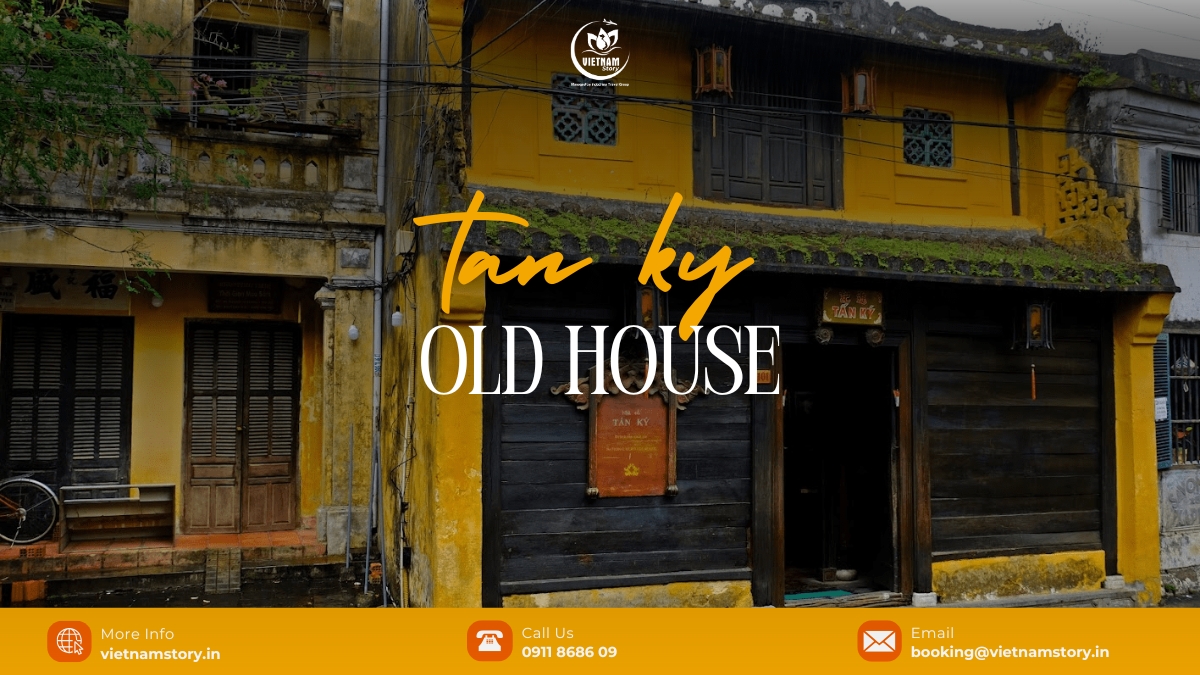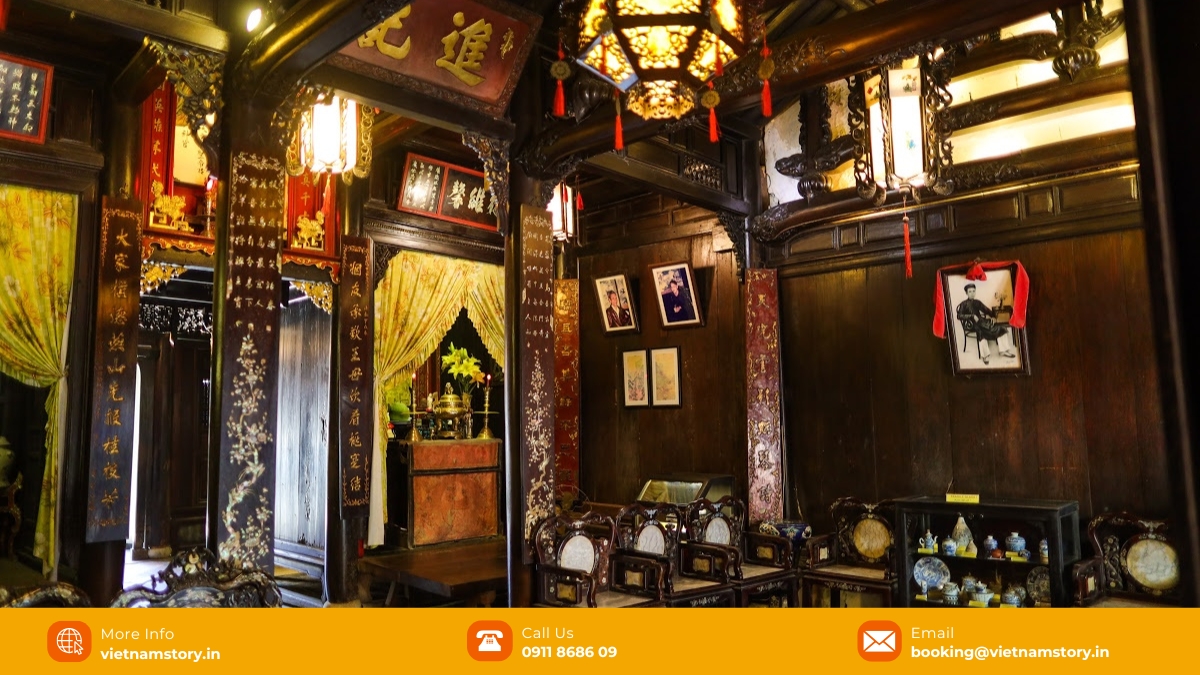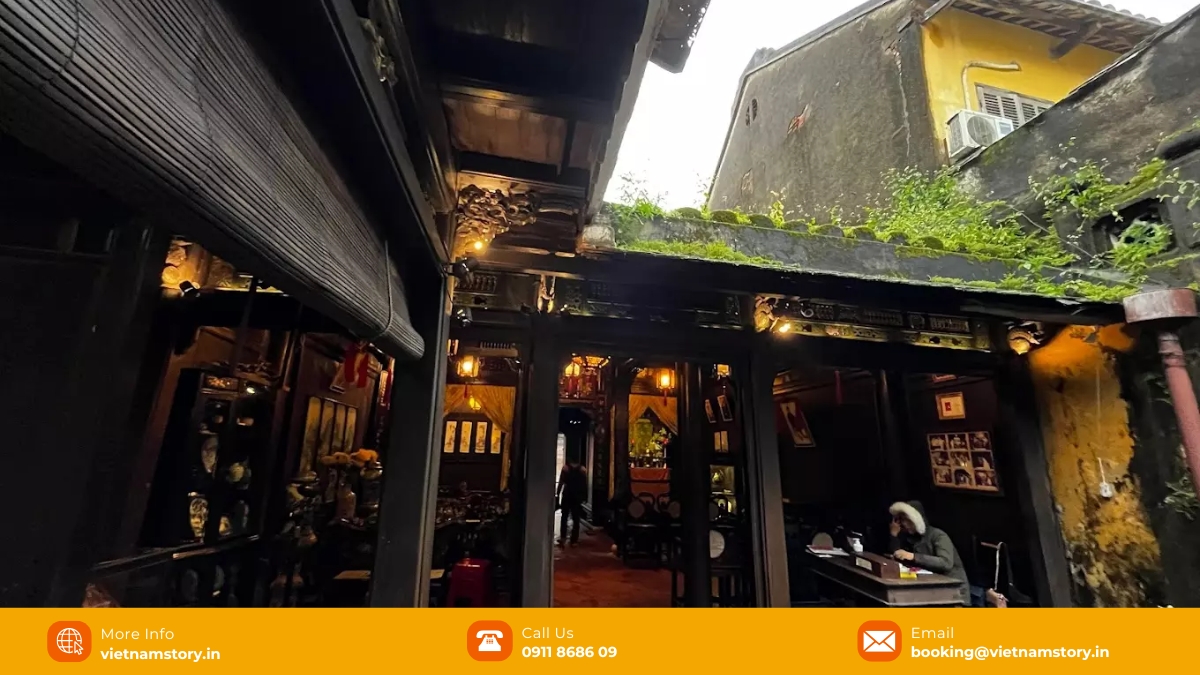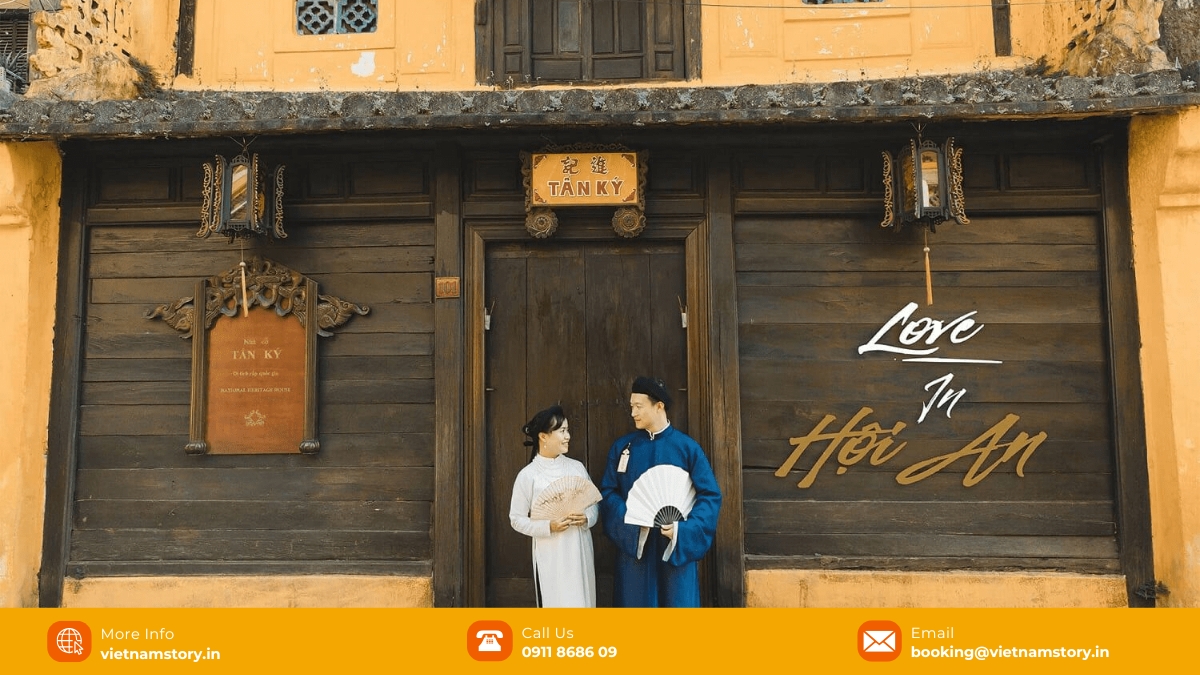In many years of guiding, we’ve learned that some of the most powerful monuments aren’t grand palaces or towering temples, but the quiet, enduring strength of a family home. We all have stories passed down through our families, but imagine if the very house you lived in was the storyteller itself—its wooden beams whispering tales of merchants from distant lands, its walls holding the memory of seven generations of laughter, prayer, and resilience. This is the magic of the Tan Ky Old House in Hoi An. It is not a static museum piece behind glass, but a living, breathing chronicle of a family’s journey through centuries. Let’s not just visit a house; let’s step inside and listen to the stories its heart has to tell.

Quick Facts: Your guide to Tan Ky Old House
Before we step inside, here is the essential information you need to know about this remarkable place.
- Location: 101 Nguyen Thai Hoc Street, right in the heart of Hoi An Ancient Town.
Tan Ky is one of the oldest and most beautifully preserved traditional merchant houses in Hoi An, Vietnam. Unique Insight: More than a museum, it is a living heritage site, having been continuously cared for and lived in by seven generations of the same family.
The house was built in 1741, making it over 280 years old. It has witnessed the rise and fall of Hoi An as a trading port and the entire modern history of Vietnam.
To visit Tan Ky Old House, you need to purchase a ticket for the Hoi An Ancient Town. This single ticket (currently 120,000 VND) grants you entry to five different heritage sites, and I always recommend making Tan Ky one of your top choices.
The timeless story of Tan Ky: A seven-generation legacy
The story of this house is the story of Hoi An itself. It was built by a prosperous Vietnamese family at a time when the town was a vibrant international trading hub.
A thriving merchant hub
The house was perfectly designed for its original purpose: commerce. It was a bustling center for trading agricultural goods. The family were successful merchants, and the house’s clever design reflects this. Unique Insight: The house has a unique dual facade, a feature that tells the story of its commercial past. The main entrance on Nguyen Thai Hoc Street was the public-facing shopfront where customers would come to trade. The rear of the house opens directly onto the Thu Bon River, where boats and barges could dock to easily load and unload goods. You can almost hear the echoes of a bygone era of bustling river trade.
Surviving the centuries
The life of this house has not always been peaceful. Hoi An is prone to seasonal flooding, and Tan Ky has endured countless devastating floods over the centuries. Inside, you can still see the markings on the wall indicating the water levels of the historic floods, a powerful testament to its resilience. Thanks to the meticulous care of the Le family and its recognition as a national heritage site, it has been preserved with incredible love and attention to detail.
A masterpiece of fusion architecture

the most fascinating aspect of Tan Ky Old House is its architecture. It is a physical embodiment of Hoi An’s history as a cultural melting pot.
A perfect blend of cultures
As you walk through the house, you will see a harmonious blend of three distinct architectural styles, reflecting the international merchants who once lived and traded here:
- Vietnamese Style: The overall layout—a long, tube-like structure with a courtyard in the middle—is distinctly Vietnamese, designed for ventilation in a tropical climate.
- Chinese Influence: Look up at the roof and the supporting beams. You’ll see intricate carvings of dragons, bats, and poems written in Chinese characters, all symbols of prosperity and good fortune.
- Japanese Touch: The gracefully curved roof over the main living area is a classic example of Japanese architecture. The support structure is a masterpiece of Japanese joinery.
Built to last: The secret of nail-free construction
Here is something truly incredible: the entire house was constructed without a single metal nail. The builders, who were master craftsmen, used a traditional technique of tenon-and-mortise joinery. Wooden pegs and carefully carved interlocking joints hold the entire structure together. This brilliant method allows the house to be slightly flexible, which is why it has survived centuries of floods, storms, and the natural shifting of the land. The materials used were the very best available. The columns are made of incredibly dense and durable ironwood (Cẩm xẻ), and the floor and walls are made of other high-quality timbers. This commitment to quality is why the house still stands strong today.
The wisdom of Feng Shui and spiritual harmony
The house was designed according to the principles of Feng Shui to ensure a harmonious flow of energy, bringing good fortune and well-being to its inhabitants. Its rectangular shape and central courtyard, known as the “well of heaven” (Giếng trời), are key features. This courtyard allows light and fresh air to enter the home, creating a connection between sky, earth, and people. Rare Attribute: Look down at the floor of the inner courtyard. You will see beautiful European porcelain tiles. These were not made in Vietnam; they were brought here on trading ships centuries ago, a small but powerful detail that speaks volumes about the global trade that passed through this very house.
Symbolism in every detail: The hidden meanings

What makes Tan Ky so special is that every carving, every piece of furniture, has a story and a meaning. It’s a house that speaks a language of symbols.
The language of the carvings
Take a moment to look closely at the wooden pillars and beams. They are covered in exquisite carvings of auspicious symbols, many of which will feel familiar to you: Dragons and Fish: Symbolize power, royalty, and prosperity. Bats: Five bats carved together represent the five blessings: happiness, wealth, longevity, health, and peace. Peaches and Pomegranates: Symbols of longevity and fertility. Birds on an Apricot Branch: A beautiful representation of spring and enduring family values.
Spiritual protection and ancestral reverence
At the main door, you will see two wooden locking mechanisms. These are called “Mắt Cửa” or “door eyes.” They serve a dual purpose. Practically, they are part of the lock. Spiritually, they are believed to be guardian eyes that watch over the home, warding off evil spirits and protecting the family within. As in any traditional Vietnamese home, the ancestral altar holds a place of central importance. It is a sacred space dedicated to honoring past generations of the family, a core value of our culture that I know is deeply shared and understood by my Indian guests.
The visitor experience: More than just a tour
A visit to Tan Ky is a uniquely personal experience.
When you enter, you are often greeted by a member of the Le family. They will give you a brief, heartfelt introduction to their home’s history. You are then free to walk through the main areas, observing the antique furniture, the beautiful mother-of-pearl inlay work, and the serene atmosphere. Unique Insight: The most wonderful part of the visit is realizing that you are a guest in a home, not just a tourist in a museum. This is a place filled with the energy of centuries of family life, making the experience feel incredibly authentic and intimate.
A visit is typically quite short, around 15-20 minutes, but it leaves a lasting impression. The house is located just a short and pleasant walk from other major Hoi An landmarks like the Japanese Covered Bridge and the bustling Central Market.
Tan Ky’s place in a wider story

The significance of this house extends far beyond its own walls.
Part of a UNESCO Heritage Site
Tan Ky Old House is one of the crown jewels of Hoi An. Its incredible state of preservation and its perfect representation of the town’s architectural and cultural history are major reasons why Hoi An was designated a UNESCO World Heritage site in 1999.
Exploring Hoi An’s Artisan traditions
The breathtaking woodwork you see in the house is a product of the legendary local craftsmanship. This provides a wonderful contextual bridge to another nearby site: the Kim Bong Carpentry Village, located just across the river. Visiting the village after seeing Tan Ky allows you to appreciate the full story of the artisan traditions that built this beautiful town.
Conclusion
Tan Ky Old House is more than just an attraction; it is a living testament to the spirit of Hoi An. It is a story of global trade, of architectural genius, and most importantly, of a family’s enduring love for their heritage. It is a quiet, contemplative space that offers a profound connection to the past.
When you visit Hoi An, we encourage you to step into this home. As your guide, we would be honored to help you understand its deeper meanings. Let us book a personalized tour with Vietnam Story so you can experience the true “storytelling” aspect of Tan Ky Old House firsthand. We are certain its celebration of family, artistry, and spirituality will resonate deeply with you.
